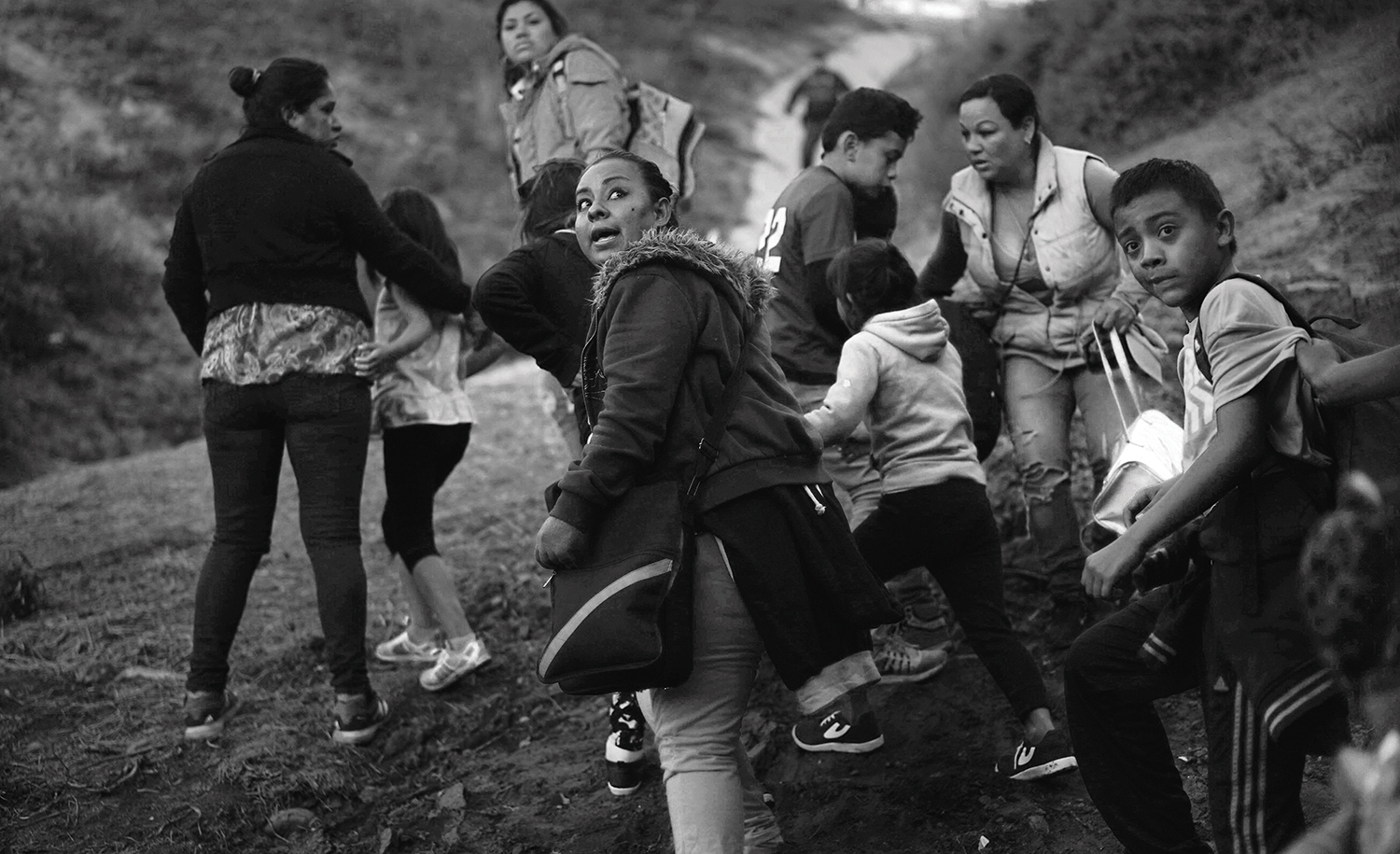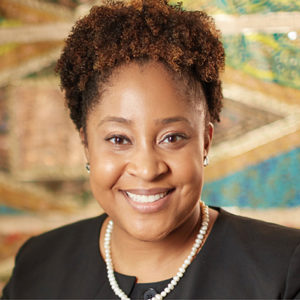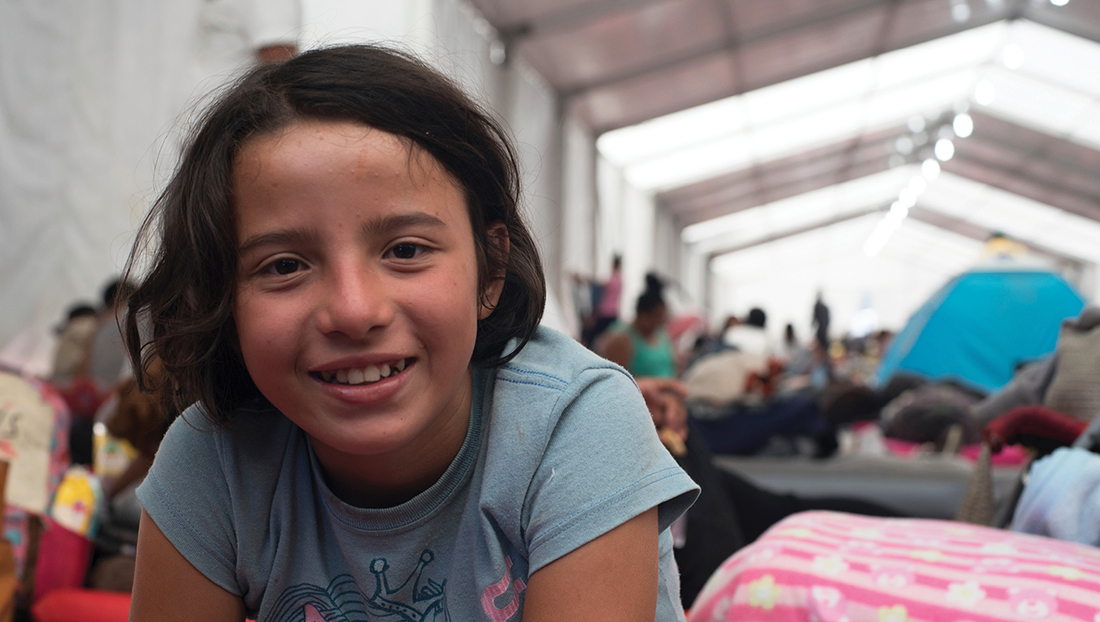By Rebecca Beyer

Karla McKanders had been back on U.S. soil for only a matter of minutes when she received an unexpected phone call. It was April 2018, and McKanders, a clinical professor of law at Vanderbilt, had just returned from a trip to Morocco, where she regularly helps immigrants and refugees in that country find access to justice.
The call on her cellphone, however, was about something much closer to home: U.S. Immigration and Customs Enforcement officials had arrested nearly 100 undocumented workers, mostly from Mexico and Guatemala, at the Southeastern Provision meatpacking plant near Morristown, Tennessee.
The news didn’t faze McKanders, though. She’d had plenty of experience with similar cases, including representing those affected by an even bigger ICE operation a decade before, when nearly 300 workers were arrested. Coordinating with other immigrants’ rights advocates and nonprofits, McKanders sprang into action, helping organize an intake clinic in June where lawyers assessed how workers could fight deportation, including by proving that removal would be an extreme hardship for dependent partners or children. Then, she helped recruit and train attorneys who agreed to take on cases. Today most of the plant workers are still awaiting judgment on whether they’ll be deported.

“There was an overwhelming response of just ensuring that people have access to counsel and that fundamental principles of due process are upheld,” McKanders says.
The work is just one example of the real-world implications of immigration law and policy, which McKanders is helping Vanderbilt Law School students understand firsthand. In 2017 she launched the school’s first Immigration Practice Clinic, which accepts eight students in the fall semester and includes the option for a second “advanced” semester. The clinic provides students the opportunity to defend clients against deportation in the Memphis Immigration Court, the Board of Immigration Appeals, and the federal courts of appeals.
In short, it’s an invaluable, immersive experience—one that can’t be replicated in the classroom alone. As immigration policy sparks national debate, Vanderbilt students are on the front lines, making a difference where their knowledge and insight are needed most.
EXPANDED OPPORTUNITIES
In fall 2017, as part of the inaugural Immigration Practice Clinic cohort, Emily Reid, JD’18, got to see just how significant the clinic could be. Reid traveled to New Orleans with McKanders to attend an asylum hearing for Sainey Darboe, one of the clinic’s clients. Darboe, a journalist originally from The Gambia in West Africa, had been persecuted for criticizing his home country’s government in his work. While visiting his brother in the U.S. in 2015, Darboe had decided it was too dangerous to return home, so he applied for asylum.
At the hearing, Reid delivered a 10-minute oral summation on Darboe’s behalf. He was granted asylum a short time later.
“The Immigration Practice Clinic was the best learning experience I had in law school,” says Reid, who now works as a fellow at Law Students in Court, a consortium that provides legal representation to low-income clients in Washington, D.C. “The clinic gives students the opportunity to work with clients one-on-one and to really navigate cases on their own.”

That’s the idea, according to Spring Miller, Vanderbilt Law School’s assistant dean for public interest. Miller previously taught an immigration advocacy practicum at the law school in partnership with alumna Adrienne S. Kittos, BA’06, JD’09, legal director at the Nashville nonprofit Tennessee Justice for Our Neighbors. But the clinic is designed to be a much more hands-on experience.
McKanders “puts students in the driver’s seat and expects the students to take ownership,” Miller says.
The Immigration Practice Clinic is part of a concerted effort to expand the law school’s immigration offerings. When Kittos was at Vanderbilt, there was just one course on the modern immigration system, taught by an adjunct faculty member. Today, in addition to the Immigration Practice Clinic, the school offers courses on Immigration Law and Policy, Refugee Law and Policy, and Crossing Borders in Law and Literature, which uses literature as a lens to explore relevant issues.
Students also can work on immigration matters pro bono. In March 2018, Miller took six law students to a detention center in Stewart County, Georgia, to argue bond motions for immigrants. Two students, Kevin Coker, JD’18, and Yalda Godusi, JD’18, were successful in their efforts. There are plans to return to the facility this spring as well.
The immigration work has connected people and departments across the Vanderbilt community. Students in AMIGOS, an undergraduate volunteer group that focuses on the Hispanic community in Nashville, have served as interpreters in the clinic’s cases; a Vanderbilt librarian set up an online research guide for the clinic’s use; and Avery Dickins de Girón, BA’90, PhD’08, executive director of the Center for Latin American Studies, supports the clinic’s work by submitting reports about conditions in countries from which the clients are fleeing.
Having a university like Vanderbilt behind the clinic is “crucial,” McKanders says. “Being able to collaborate in an interdisciplinary way with colleagues is extremely important.”
MEETING UNMET NEEDS
The law school’s decision to invest in its immigration curriculum comes in response to student interest and a growing need for such services in the United States. The past two years have been particularly active ones for immigration law, marked by, among other things, a travel ban to the U.S. from certain countries, a limit on the number of refugees who can enter the country, and a detention policy that separated some immigrant children from their parents.
These changes have had a direct impact on Tennessee. In 2017 the state had about 15,000 pending immigration-related cases, 10 times the number it had in 2007, according to the TRAC Immigration research center at Syracuse University.
“We certainly have a big unmet need for services across the board,” says Kittos, who was recognized in January as the Tennessee Bar Association’s Ashley T. Wiltshire Public Service Attorney of the Year. “There are a lot more folks interested in accessing those services than attorneys able to provide them. That’s why having the clinic is so exciting.”
Meeting the need for immigrant representation is one reason McKanders decided to go into teaching. As a law clerk for Judge Damon J. Keith of the U.S. Court of Appeals for the 6th Circuit, she saw the difference a good lawyer could make in an immigrant’s case.

“What stood out to me was the varied level of advocacy in the briefs the government was writing and the briefs on behalf of immigrants, some of them pro se,” she says. “To be able to do this type of work while inspiring students to take on pro bono cases or become immigration-law practitioners became one of my career goals.”
McKanders feels it’s especially important for her students to advocate at the appellate level, given the federal policy changes. In April, McKanders was co-counsel on an amicus brief in the Matter of A-B case in which then-Attorney General Jeff Sessions issued a ruling drastically limiting claims for asylum by victims of “private criminal activity,” such as domestic or gang violence, as opposed to persecution by a government. Students in McKanders’ Refugee Law and Policy course assisted on the brief. Since then, her clinic has received requests for help in appealing adverse decisions based on Sessions’ ruling.
“The clinic is really trying to focus on challenging current iterations of law,” she says. The Matter of A-B decision “challenges well-established legal principles that have existed for decades: that victims of nonstate actors are eligible for asylum. That case turns that principle on its head.”
McKanders’ students are already receiving recognition for their work. The ABA Journal wrote about the clinic’s launch, and last spring the Life of the Law podcast featured students’ audio stories, which McKanders had assigned as an exercise in how to inform the public about complicated issues.
But, of course, the greatest recognition comes from the clients. Darboe, the journalist from West Africa who won asylum in 2017, now lives in Nebraska. He works as a residential support specialist for people with developmental disabilities; his wife is a nurse, and they have a young son. He says the day he found out he had been granted asylum was “the happiest day of my life.”
“At first I was nervous about applying for asylum,” Darboe says. “I even thought about withdrawing my case. But Karla told me, ‘This is the United States. We have laws for you.’”
Rebecca Beyer is a freelance writer and editor based in New York City.
Watch a video of Karla McKanders discussing her perspective on immigration:
Pushed to the Wall
Crime, not money, drives migration from El Salvador and Honduras

Vanderbilt research has found that being a victim of crime is a strong motivation for Central American migrants to come to the United States, despite their understanding the risks of the journey and challenges of the U.S. immigration system. The data analysis by Jonathan Hiskey, associate professor of political science, and his co-authors suggests that current migration deterrence policies, which mainly target economic migrants, are ineffective against migrants fleeing violence.
To measure crime in Central American nations empirically, the researchers analyzed data from the Vanderbilt Latin American Public Opinion Project’s 2014 AmericasBarometer survey, which included questions about respondents’ personal experience with crime and whether they intended to migrate to the U.S. in the next three years. The AmericasBarometer survey is conducted entirely in person by fieldworkers and is considered to be the gold standard for public opinion research.
“We found that one of the most powerful predictors of migration is if the person has been victimized by crime in the previous 12 months, and an even more powerful predictor is if that person has been victimized multiple times by crime,” Hiskey says.
Of those from El Salvador expressing an intent to migrate who said they had been the victim of a crime in the previous year, 35 percent had been victimized once, and 44 percent had been victimized multiple times. Of those from Honduras, 39 percent had been victimized once, while 56 percent had been victimized more than once.
In El Salvador and Honduras, Hiskey says, the violence is often a widespread daily occurrence, where families are routinely extorted, and where children are recruited by force into gangs or to participate in violent initiation rituals.
“They reach a point where they just say, simply, ‘I don’t care what lies in front of me, I have to leave, I have to get my kids out,’” he explains.
The researchers then tested the reach of the deterrence campaign with a special survey conducted by LAPOP in Honduras and found that people were overwhelmingly aware of the U.S. warnings. Nearly nine in 10 understood that crossing the U.S. border was more difficult, while eight in 10 understood it to be less safe and that deportations were increased. Two-thirds also believed that migrants were being treated worse in the U.S. than they used to be.
These are not the kind of migrants who are likely to respond to measures designed to stem economic migrants, Hiskey says. “The U.S. policy approach to unauthorized migration at the Southwest border, in my mind, has to change fundamentally to match who’s arriving.”
The paper, “Leaving the Devil You Know: Crime Victimization, U.S. Deterrence Policy, and the Emigration Decision in Central America,” was published in the Latin American Research Review. Political scientists contributing to the research included Vanderbilt graduates Abby Córdova, MA’03, MA’05, PhD’08, of the University of Kentucky and Diana Orcés, PhD’10, of the American Immigration Council, as well as Mary Fran Malone of the University of New Hampshire.
—LIZ ENTMAN